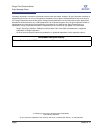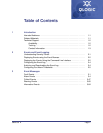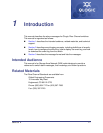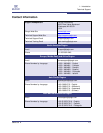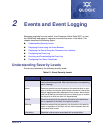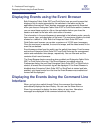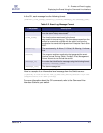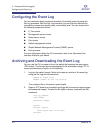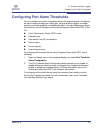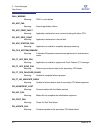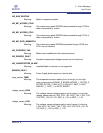
2 – Events and Event Logging
Displaying Events using the Event Browser
2-2 59060-05 A
S
Displaying Events using the Event Browser
Both Enterprise Fabric Suite 2007 and QuickTools have an event browser that
displays a list of events generated by the switches in the fabric and by the
applications themselves. Event browser messages are permanently discarded
when you close an Enterprise Fabric Suite 2007 or QuickTools session; however,
you can save these events to a file on the workstation before you close the
session and read the file later with a text editor or browser.
The information in the event browsers is presented in the following order: severity,
time, source, type, and description of the event. The maximum number of entries
allowed on a switch is 1,200. Both the Enterprise Fabric Suite 2007 and
QuickTools event browser can contain a maximum of 10,000 event messages.
Once the maximum is reached, the event list wraps, and the oldest events in the
event list are deleted.
Event browser entries from the switch use the switch time stamp. Event browser
entries from Enterprise Fabric Suite 2007 and QuickTools use the management
station and workstation time stamps, respectively. You can filter and sort the
contents of both event browsers.
The Event Browser begins recording when enabled and Enterprise Fabric Suite
2007 or QuickTools is running. If the Event Browser is enabled using the
Preferences dialog, the next time Enterprise Fabric Suite 2007 or QuickTools is
started, all events from the switch log will be displayed. If the Event Browser is
disabled when Enterprise Fabric Suite 2007 or QuickTools is started and later
enabled, only those events from the time the Event Browser was enabled and
forward will be displayed.
Displaying the Events Using the Command Line
Interface
When you log into a switch through Telnet, the command line interface
automatically displays the alarm history. You can use the Show Alarm or
Show Log command to display the alarm history at any time. New alarm
messages are displayed in the command stream as they occur.



